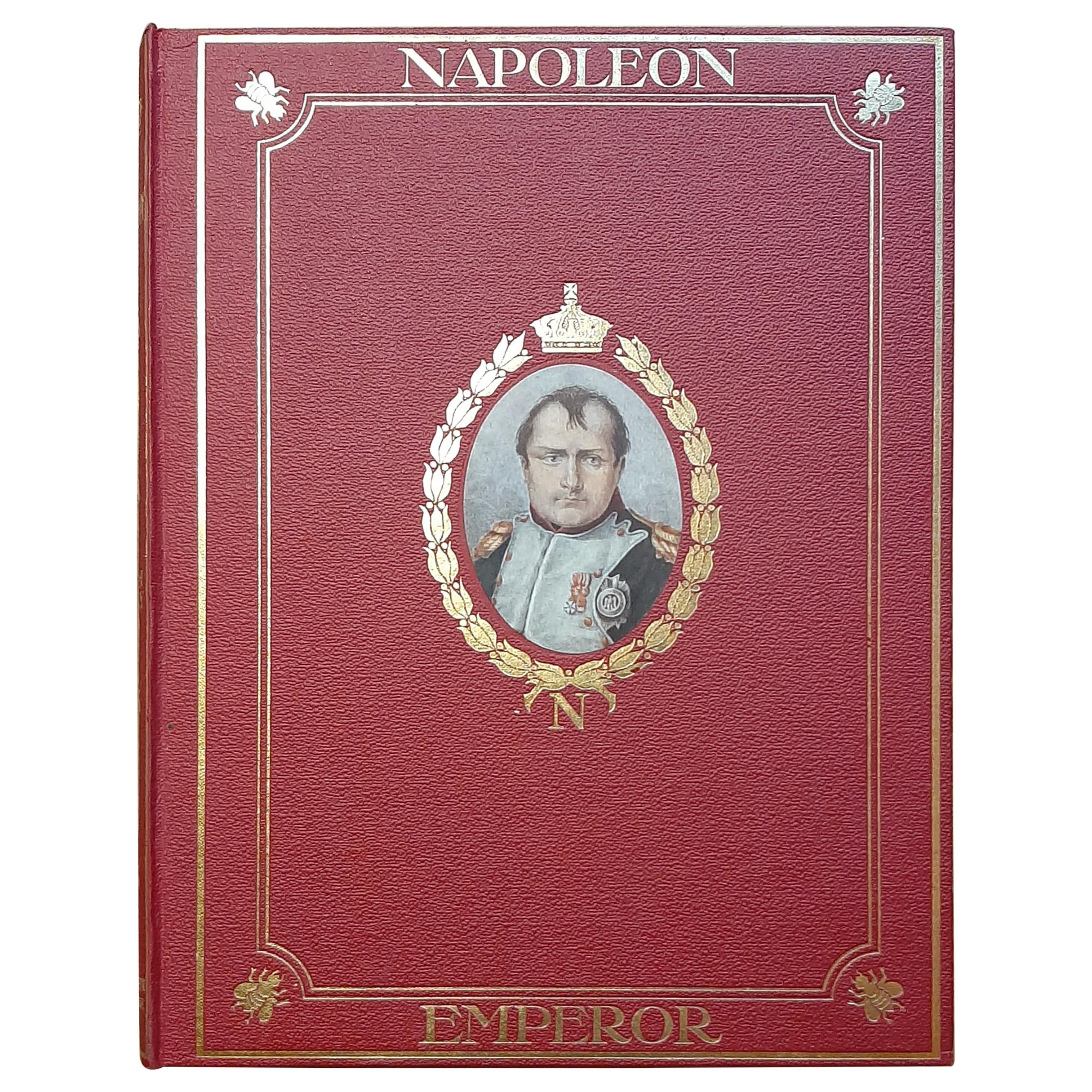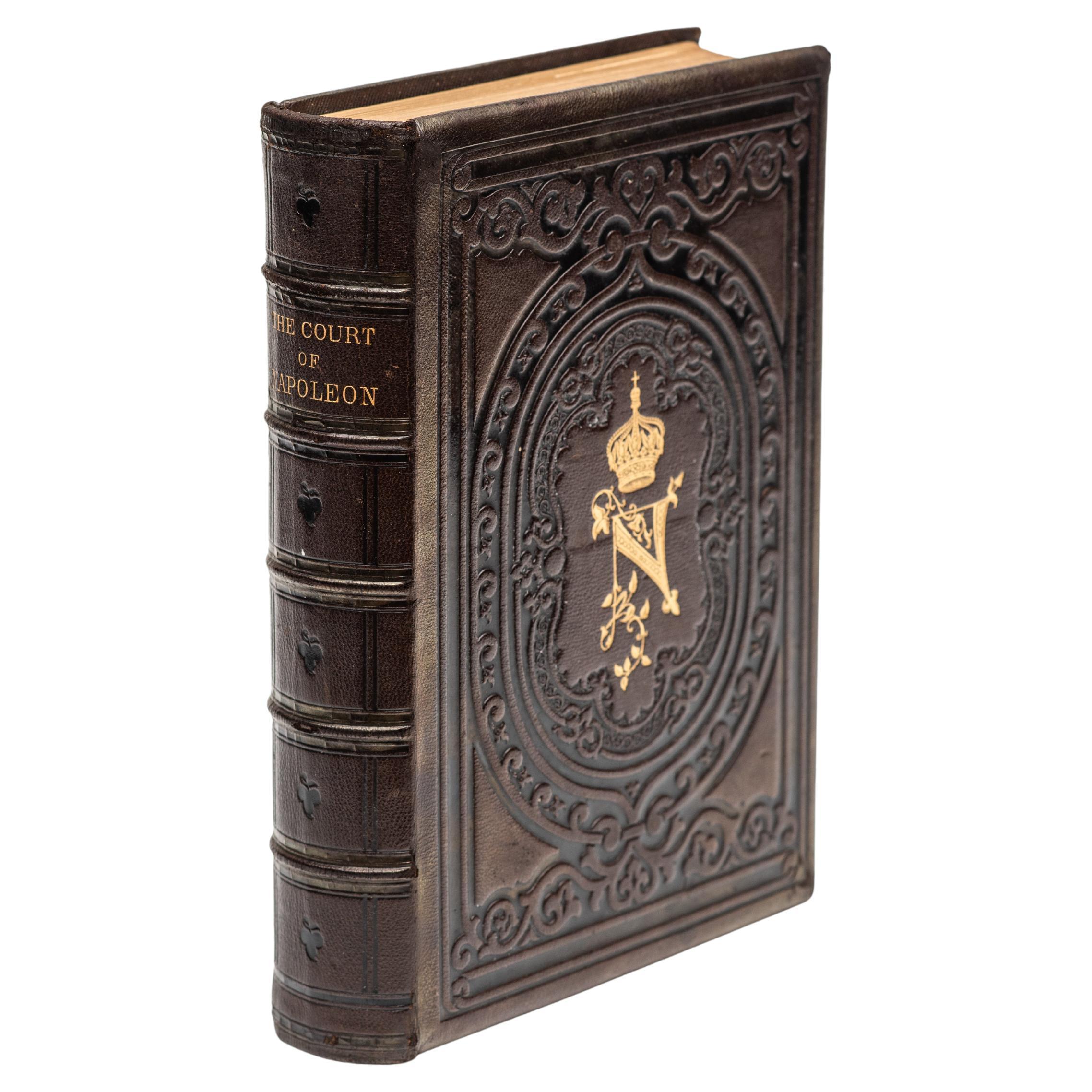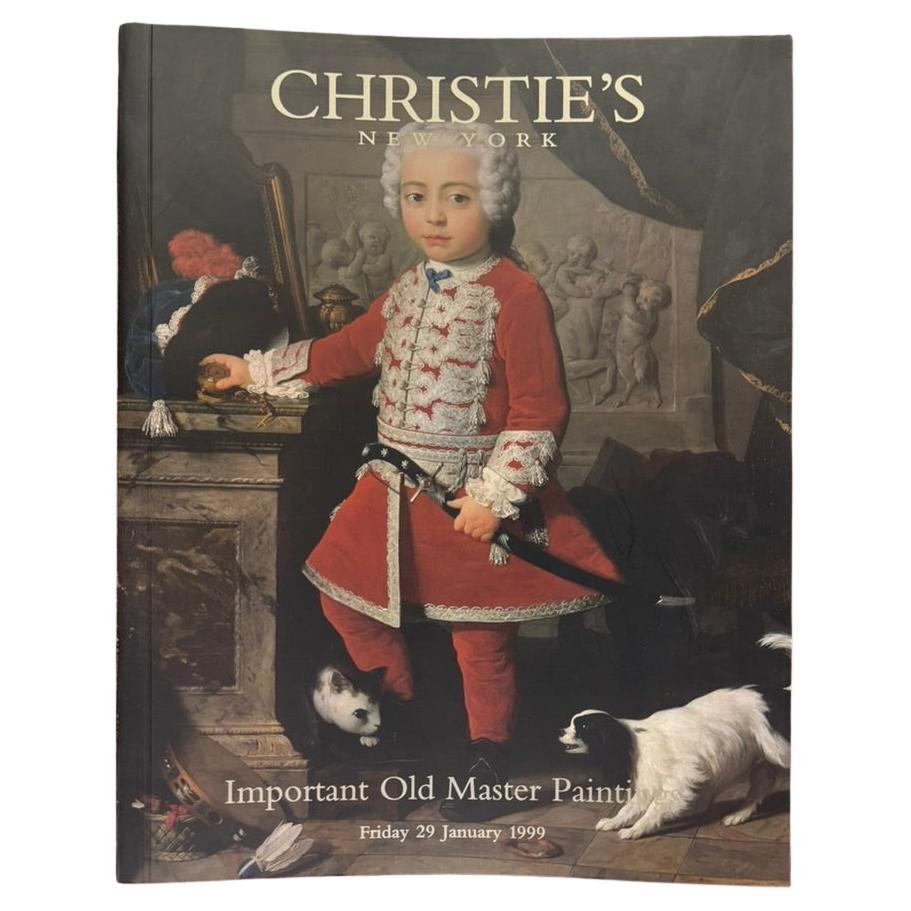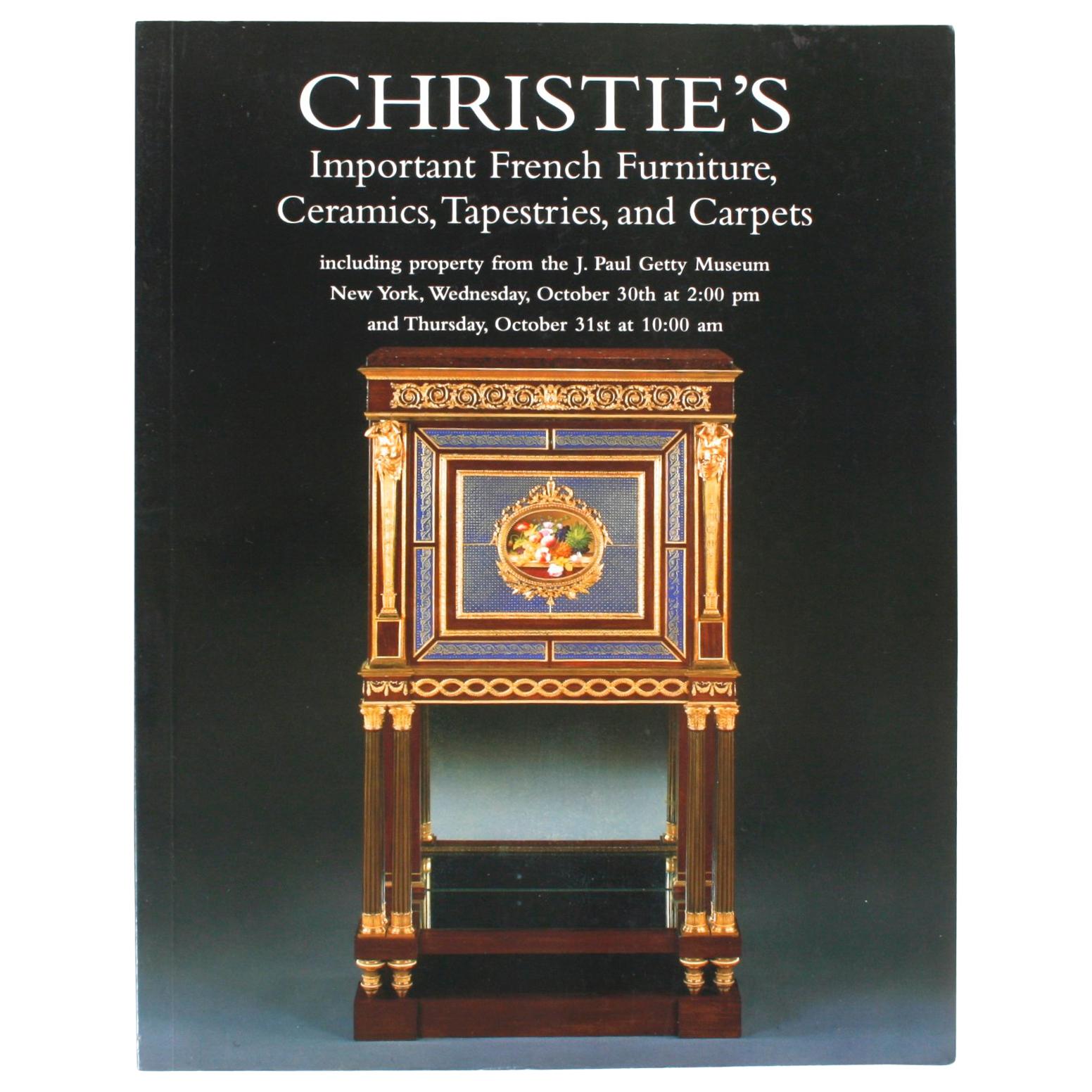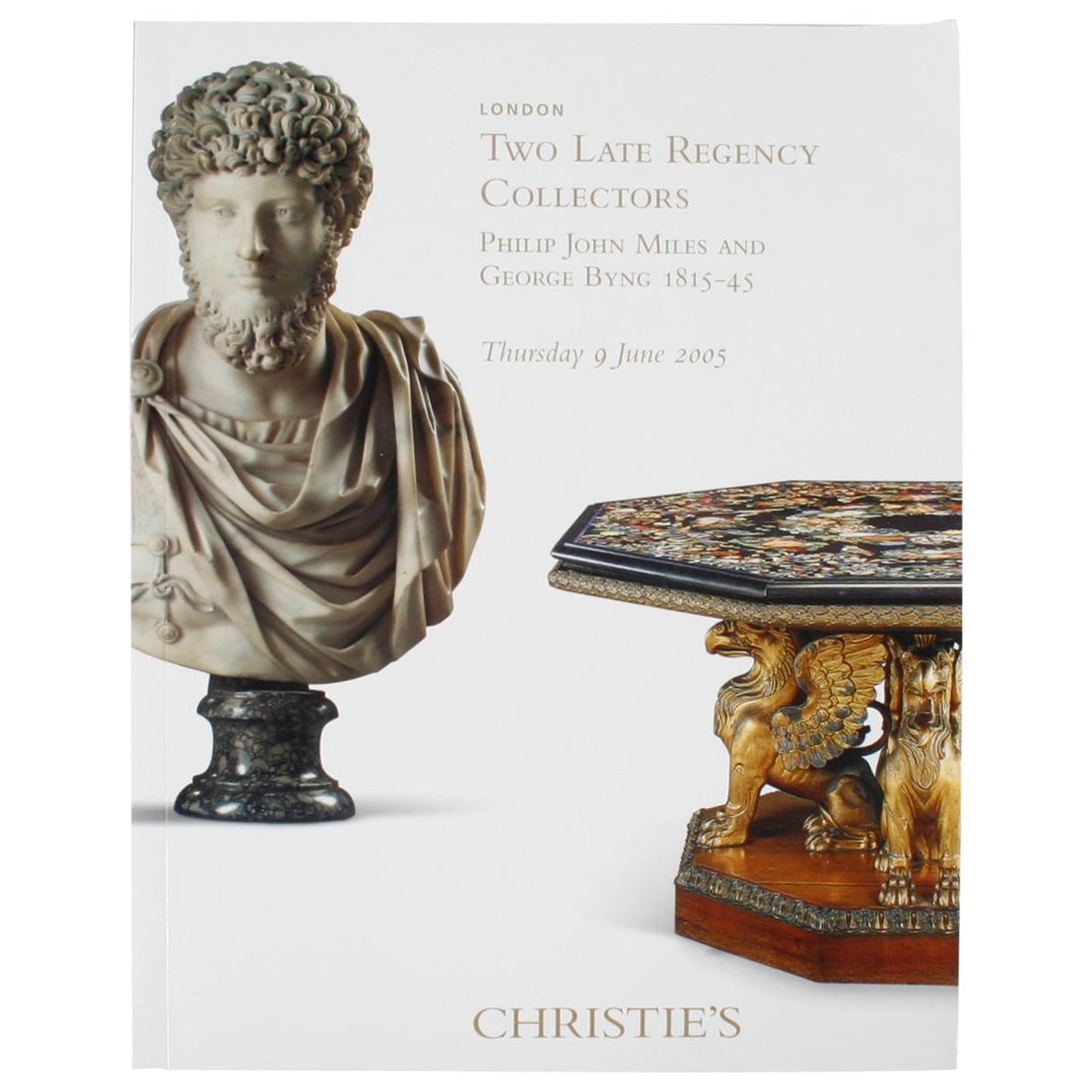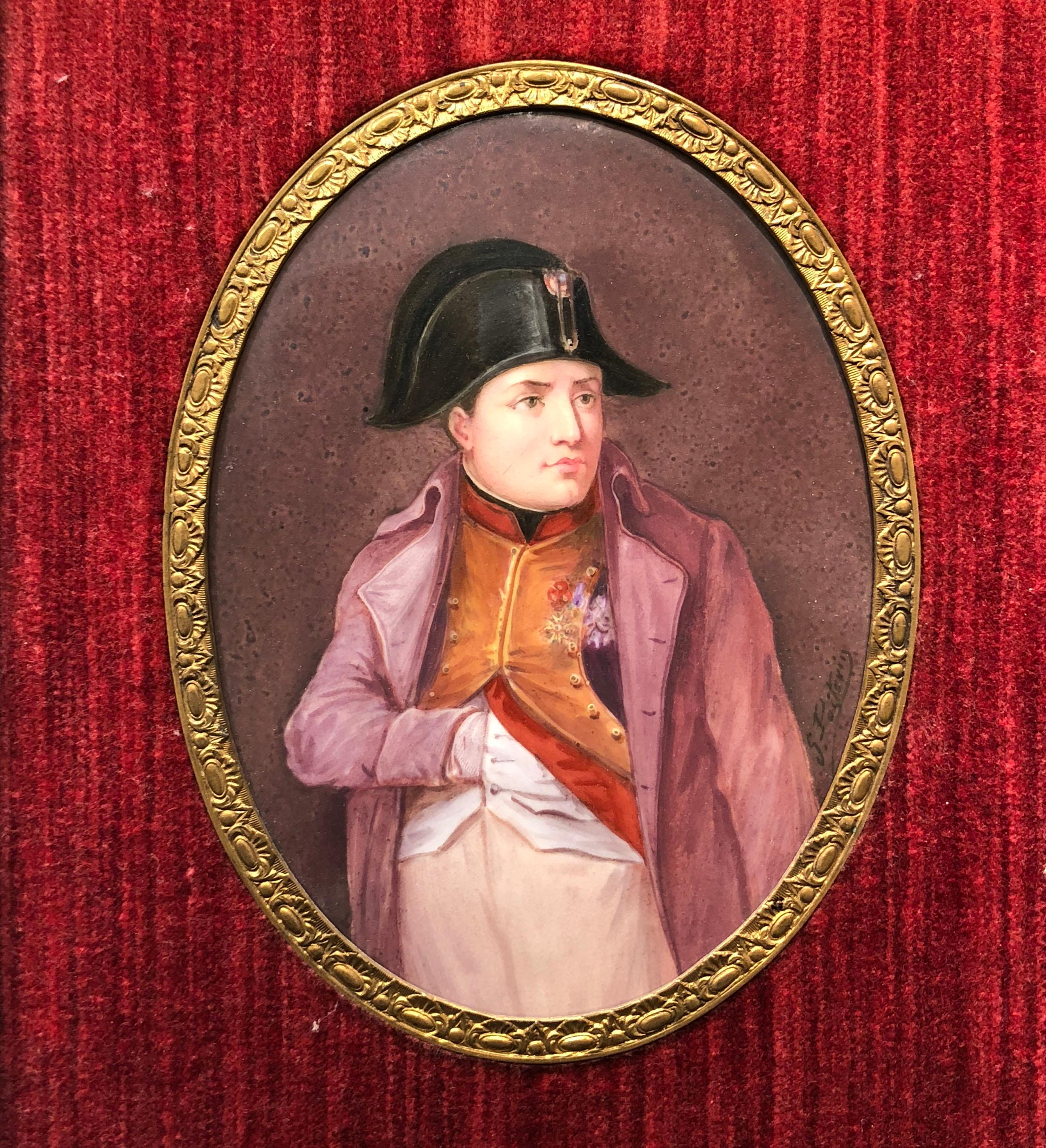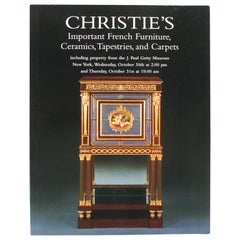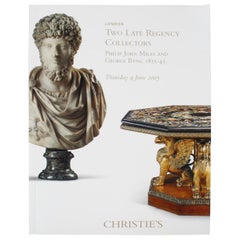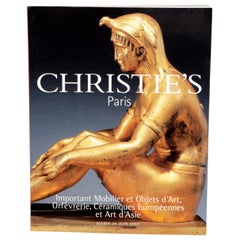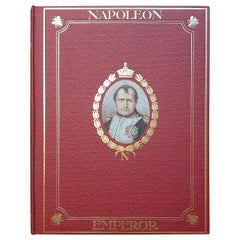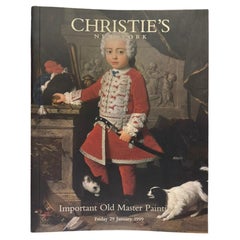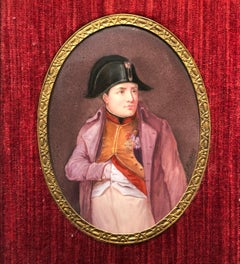Items Similar to Napoleon, Nelson and Their Time. The Calvin Bullock Collection Christie's
Want more images or videos?
Request additional images or videos from the seller
1 of 8
Napoleon, Nelson and Their Time. The Calvin Bullock Collection Christie's
$95
£71.48
€82.56
CA$134.26
A$145.69
CHF 77.20
MX$1,786.85
NOK 955.40
SEK 902.80
DKK 616.35
About the Item
Napoleon, Nelson and Their Time. The Calvin Bullock Collection Christie's, May 1985. The sale consisted of items from the renowned New York collector Calvin Bullock, which was formed in the years between the great world wars. It is regarded as the finest collection of Napoleonic material in private hands. With 402 lots many illustrated in color or black & white. 164 pages. With results.
NPT Books a division of N.P. Trent Antiques has a large collection of used and out of print books on art, architecture, decoration and antiques with a focus on 1st editions, signed and limited editions.
We offer free shipping to any domestic address.
- Creator:Christie's (Author)
- Dimensions:Height: 77 in (195.58 cm)Width: 7.75 in (19.69 cm)Depth: 0.75 in (1.91 cm)
- Materials and Techniques:
- Place of Origin:
- Period:1980-1989
- Date of Manufacture:1985
- Condition:loose page.
- Seller Location:valatie, NY
- Reference Number:Seller: PC1661stDibs: LU2605143497772
NPT Books
NPT Books, a division of N. P. Trent Antiques, was established in 1982 and serves clients in the US and around the world. We offer a large selection of used and out of print books mainly concentrating on art, architecture, decoration and antiques with a large focus on 1st editions, signed and rare limited editions. Member of The Art and Antique Dealers League of America since 1996.
About the Seller
5.0
Platinum Seller
Premium sellers with a 4.7+ rating and 24-hour response times
Established in 1980
1stDibs seller since 2017
1,336 sales on 1stDibs
Typical response time: <1 hour
- ShippingRetrieving quote...Shipping from: valatie , NY
- Return Policy
Authenticity Guarantee
In the unlikely event there’s an issue with an item’s authenticity, contact us within 1 year for a full refund. DetailsMoney-Back Guarantee
If your item is not as described, is damaged in transit, or does not arrive, contact us within 7 days for a full refund. Details24-Hour Cancellation
You have a 24-hour grace period in which to reconsider your purchase, with no questions asked.Vetted Professional Sellers
Our world-class sellers must adhere to strict standards for service and quality, maintaining the integrity of our listings.Price-Match Guarantee
If you find that a seller listed the same item for a lower price elsewhere, we’ll match it.Trusted Global Delivery
Our best-in-class carrier network provides specialized shipping options worldwide, including custom delivery.More From This Seller
View AllChristie's NY: Important French Furniture, Ceramics Property from J. Paul Getty
Located in valatie, NY
Christie's NY: Important French Furniture, Ceramics, Tapestries, and Carpets including Property from J. Paul Getty Museum, October 1996. 447 lots and 295 ag...
Category
1990s American Books
Materials
Paper
Christie's Two Late Regency Collectors, Philip Miles & George Byng, 1814-1845
Located in valatie, NY
Two late Regency collectors - Philip John Miles and George Byng 1814-1845 Thursday 9 June 2005. Softcover auction catalog. A great look at the interiors of great houses in the Regenc...
Category
Early 2000s English Books
Materials
Paper
Christie's Important European Furniture, Works of Art, Ceramics, 1st Ed, 5/2005
Located in valatie, NY
Christie's Auction Catalog Important European Furniture. Works of Art, Ceramics, Tapestries and Carpets. Christie's NY, May 2005. 1st Ed softcover with results. 598 lots in color.
...
Category
Early 2000s American Books
Materials
Paper
Important Mobilier et Objets d’Art, Christie's Catalogue Juin 2003
Located in valatie, NY
Christie's Important Mobilier et Objets d’Art, Orfèvrerie, Ceramiques Européennes, Arts d’Asie, Juin 2003. Christie's Paris, 2003. 1st Ed softcover with results. This sale also inclu...
Category
Early 2000s French Books
Materials
Paper
Pair of Christie's Catalogs, The Exceptional Sale 2010 and 2013 London, 1st Ed
Located in valatie, NY
Pair of Christie's Catalogs, The Exceptional Sales 2010 and 2013 London. 1st Ed auction catalog. Since 2008 this unique sale platform has provided collectors with the opportunity to ...
Category
21st Century and Contemporary English Books
Materials
Paper
Christie's, Important European Furniture & a Collection of Magnificent Mirrors
Located in valatie, NY
Christie's, important European Furniture, sculpture and tapestries, including, reflected glory, a Private collection of magnificent mirrors, Thursda...
Category
Early 2000s English Books
Materials
Paper
You May Also Like
Napoleon, Illustrated with Prints from Contemporary and Other Portraits by Baily
Located in Langweer, NL
'Napoleon, Illustrated with Prints from Contemporary and other Portraits' by J.T. Herbert Baily. 126,(2) pp. illustrated, steel engraving frontispiece, 14 illustrations added to the ...
Category
20th Century Books
Materials
Paper
$287 Sale Price
20% Off
1 Volume. Goodrich, Frank B. The Court Of Napoleon.
Located in New York, NY
1 Volume. Goodrich, Frank B. The Court Of Napoleon. Illustrated in color by Jules Champagne. Bound in full brown morocco, all edges gilt, raised bands, blind tooling on covers and sp...
Category
Antique Mid-19th Century American Books
Materials
Leather
Important Old Master Paintings, Christie's, January 29th, 1999
By Christie's
Located in Stamford, CT
Christie's Important Old Master Paintings catalog, New York January, 29 1999. This auction catalog consists of 206 lots, all color illustrations, with all lots described in detail. C...
Category
Late 20th Century American Baroque Books
Materials
Paper
Napoleon
By Manufacture Nationale de Sèvres
Located in Missouri, MO
Sevres 19th C.
Original Hand Painted Porcelain
Signed "G Poitevin"
approx 9 x 5 inches/15 x 12 framed
The vast and diverse production of the Sèvres factory in the nineteenth century resists easy characterization, and its history during this period reflects many of the changes affecting French society in the years between 1800 and 1900. Among the remarkable accomplishments of the factory was the ability to stay continuously in the forefront of European ceramic production despite the myriad changes in technology, taste, and patronage that occurred during this tumultuous century.
The factory, which had been founded in the town of Vincennes in 1740 and then reestablished in larger quarters at Sèvres in 1756, became the preeminent porcelain manufacturer in Europe in the second half of the eighteenth century. Louis XV had been an early investor in the fledgling ceramic enterprise and became its sole owner in 1759. However, due to the upheavals of the French Revolution, its financial position at the beginning of the nineteenth century was extremely precarious. No longer a royal enterprise, the factory also had lost much of its clientele, and its funding reflected the ruinous state of the French economy.
However, the appointment in 1800 of Alexandre Brongniart (1770–1847) as the administrator of the factory marked a profound shift in its fortunes. Trained as both an engineer and a scientist, Brongniart was both brilliant and immensely capable, and he brought all of his prodigious talents to the running of the troubled porcelain factory. He directed the Sèvres factory as administrator until his death in 1847, and during those five decades influenced every aspect of its organization and production. Much of the factory’s old, undecorated stock was immediately sold off, and new forms—largely in the fashionable, more severe Neoclassical style—were designed to replace out-of-date models. The composition for hard-paste porcelain was improved, and the production of soft paste, for which the factory had been famous in the previous century, was abandoned in 1804. New enamels colors were devised, and Brongniart oversaw the development of a new type of kiln that was both more efficient and cost-effective.
Much of the factory’s output during Brongniart’s first decade reflected the prevailing Empire taste, which favored extensive gilding, rich border designs, and elaborate figural scenes (56.29.1–.8). Backgrounds simulating marble or a variety of hardstones were employed with greater frequency (1987.224); the new range of enamel colors developed under Brongniart made it easier to achieve these imitation surfaces, and it is thought that his interest in mineralogy provided the impetus for this type of decoration.
For objects produced in sets, such as dinner, tea, and coffee services, and even garnitures of vases, Brongniart preferred decorative schemes that linked the objects in terms of subject matter as well as stylistically. Dinner services were given coherence by the use of an overall theme, in addition to shared border patterns and ground colors. One of the best examples of this can be found in the “Service des Départements,” which was conceived by Brongniart in 1824 (2002.57). Each of the plates in the service was decorated with a famous topographical view of the département (administrative unit) of France that it represented, and its border was painted with small cameo portraits of figures from the region, as well as symbols of the major arts, industries, and products of the area. This same type of thematic unity is found on a coffee service produced in 1836 (1986.281.1ab–4). All of the pieces of the service are decorated with scenes depicting the cultivation of cacao, from which chocolate is made, or various stages in the preparation of chocolate as a beverage. The compositions were conceived and executed by Jean Charles Develly, a painter at Sèvres who was responsible for many of the most ambitious dinner services produced at the factory during Brongniart’s tenure.
The range of objects produced in the first half of the nineteenth century was enormous, as were the types of decoration that they employed. A recent exhibition catalogue devoted to Brongniart’s years at Sèvres indicates that ninety-two new designs for vases were introduced, as were eighty-nine different cup models, and the types of objects produced by the factory included every sort of form required by a dinner or dessert service, coffee and tea wares, decorative objects such as vases, and functional objects such as water jugs, basins, and toiletry articles. A new form rarely replaced an older one; the range of production simply increased.
The same was true with types of decoration, as the factory was working in a wide variety of styles at any given time. From the earliest years of the Sèvres factory, its painters had copied not only contemporary compositions but also prints and paintings from earlier periods. However, under Brongniart, the factory sought to copy famous paintings with the specific intention of recording the “true” appearance of works increasingly perceived to be fragile. Works by a wide variety of artists were copied, but those by Raphael were especially popular. Raphael’s stature is reflected in a vase of 1834 in which a cameo-style portrait of the artist decorates the primary reserve, while on the back an artist’s palette is encircled by the names Titian, Poussin, and Rubens (1978.373).
Just as works by earlier artists were copied, so too were decorative techniques of previous centuries. The interlace patterns of so-called Saint-Porchaire ceramic ware of the sixteenth century served as the inspiration for the decoration on a cup of 1837 (2003.153). The form of the cup itself derives from Renaissance silver forms made in Italy and France. However, the palette of vibrant reds, greens, blues, and yellows contrasts markedly with the muted browns and off whites of Saint-Porchaire wares and reflects the reinterpretation of historical styles that was characteristic of so much of nineteenth-century decorative arts.
Interest in the Gothic style emerged early in Brongniart’s tenure at Sèvres and remained popular for much of the nineteenth century. Strict adherence to Gothic motifs was rarely observed, however, and the Gothic style was more evoked than faithfully copied. This tendency is reflected in a pair of vases (1992.23.1) for which the model was designated vase gothique Fragonard (named after the vase’s designer, Alexandre Evariste Fragonard [1780–1850]. The Gothic elements lie more in the painted decoration than in the form itself, and the style of the painting reflects a Renaissance technique rather than a medieval one. The palette of grays and whites on a blue ground instantly recalls the enamel-on-copper wares produced in Limoges, France, in the sixteenth century, and its use on these vases indicates the willingness to freely mix artistic styles and techniques of different periods in order to achieve new aesthetic effects.
The eclecticism and historicism that characterized so much of the production during Brongniart’s tenure continued after his death in 1847. The factory’s output reflected an ongoing desire for technical innovation as well as a wide embrace of diverse decorative styles that were employed simultaneously. A tea and coffee service of 1855–61 (69.193.1–.11) embodies the selective borrowing of forms and motifs that is found so frequently in Sèvres production of the middle decades of the nineteenth century. The shapes used for the different components of the service evoke both China and the Near East, an obvious allusion to the origins of the two beverages. The openwork decoration refers directly to Chinese ceramics made in this technique, and the decoration employs a variety of Chinese emblems. However, the palette of pink and gold, entirely European in character, serves to neutralize the Asian aspects of the service.
Perhaps the only thread that can be said to run through much Sèvres production of the nineteenth century is the proclivity to borrow freely from various historical styles and then to either reinterpret these styles or combine them in unprecedented ways. A standing cup of 1879 (1990.238a,b) draws upon silver cups of the Renaissance for its form, but in this instance the size of the porcelain cup dwarfs any of its metal prototypes. Its style of decoration derives from Limoges painted enamels of the sixteenth century, but the prominent use of gilding throughout reflects its wholly nineteenth-century character. This cup was presented by the French government to one of the first-prize winners at the 1878 Exposition Universelle.
It was with the advent of the Art Nouveau style at the very end of the nineteenth century that historicism lost its grip at Sèvres, and indeed throughout the decorative arts, and forms inspired by nature and often characterized by asymmetry become dominant. This reliance upon natural forms is fully evident in a coffee service of 1900–1904 (1988.287.1a,b). The designer, Léon Kann...
Category
Late 19th Century Figurative Paintings
Materials
Porcelain, Oil
Price Upon Request
4 Volumes. Sloane, William M. Life Of Napoleon Bonaparte.
Located in New York, NY
4 Volumes. Sloane, William M. Life Of Napoleon Bonaparte. Bound in 3/4 red morocco, cloth boards, top edges gilt, raised bands, gilt panels, marbled endpapers, colored frontispieces ...
Category
Early 20th Century American Books
Materials
Leather
William Milligan Sloane, Life Of Napoleon Bonaparte, 1896, Complete 4 Vol. Set
Located in Bridgeport, CT
New York The Century Co. 1896. An oversized set in dark brown leather with four spine bands and gilt lettering. Blue gray marbleized papers.
12 1/2" H x 8 7/8" W x 2 1/8" D
Conditi...
Category
Antique 19th Century American Victorian Books
Materials
Leather, Paper
More Ways To Browse
Dickens Christmas Stories
Eric Marshall
Ernest Hemingway Signed
Farrow And Ball Wallpaper
First Edition Great Gatsby
Frank Milner
Frankenstein First Edition
George W Russell
Georges Jouve Book
Hemingway Autograph
Hermes Furniture Catalogue
Hermes La Beaute En Voyage
Hr Giger Art
Hr Giger
Ibiza Bohemia
In The American West Avedon Book
Isamu Noguchi Book
Jacques Grange Book
